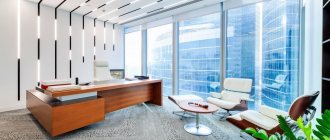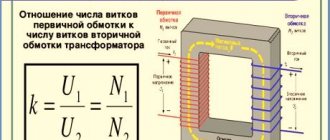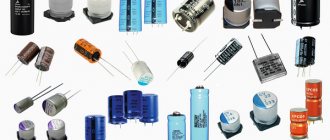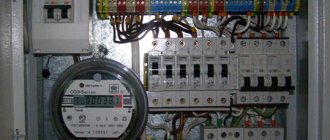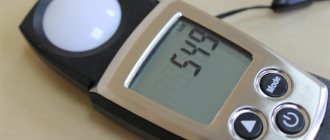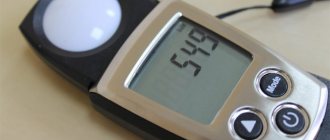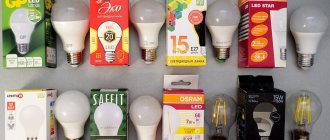Legislative regulation of the issue
The main document that regulates lighting norms and standards in Russia is SNIP 05/23/95. It was published in 1995 and is constantly updated. For example, on May 20, 2011, a set of rules for Natural and artificial lighting was published - SP 52.13330.2011. In addition, there are Sanitary rules and regulations, Moscow city building codes and other regional and industry documents.
There is GOST R 55710-2013 “Lighting of workplaces inside buildings. Standards and methods of measurement”, which establishes indicators of artificial light at workplaces during the design, reconstruction and operation of lighting installations and methods for their measurement. These standards provide safe and comfortable working conditions.
The rules for applying this standard are established in Article 26 of the Federal Law “On Standardization in the Russian Federation”.
HOW IMPORTANT IS LIGHTING CALCULATION?
Depending on the type of lighting, client requirements and operating conditions, the lighting engineer selects the type of equipment, and then calculates the illumination in accordance with the technical specifications, regulatory documents, SNiP and GOST in specialized software environments such as Dialux, Calcalux, Relux, Litestar, etc. Both the implementation of the concept and the efficiency of energy consumption during operation depend on the quality of lighting design.
Lighting calculations allow you to find the optimal and correct solution: choose the type, optics, power of lamps, and also determine the height, location of the device and the direction of the beam in space, thereby reducing the power and cost of the lighting installation, in other words, increasing energy efficiency at the lowest cost of initial costs.
Thanks to various program options, for complex and massive structures we have the opportunity to build a lighting scene with details of engineering structures, introduce additional elements and objects, i.e. accurately reproduce the architecture of the object in order to avoid errors at the project development stage. Correctly performed lighting calculations and well-arranged results make it possible to simplify the setup of equipment and thereby reduce the time for putting the facility into operation.
Lighting calculations help determine the choice of an economically viable lighting system and its characteristics. In the process of this calculation, lighting specialists will determine the type of lamps that correspond to your facility, their power, the optimal quantity and features of installing light sources in the specified area.
After the implementation of a completed lighting project, our specialists, using professional tools, can perform illumination measurements, draw a conclusion on the state of the lighting system in the measured areas and conduct an audit of the lighting installation for compliance with regulatory indicators. In addition, our clients can always contact us for methodological instructions on taking measurements and practical training for personnel to independently carry out lighting measurements.
For a complete audit of the lighting installation, we have our own registered electrical laboratory and permission to conduct an energy inspection of the facility.
Lighting standards depending on the purpose of the workplace
The above Code of Rules establishes different lighting standards for offices depending on the nature of the work in them. In the field of office work, in reception rooms where computer equipment is used, the indicator should be 200-300 lux:
- where people work with drawings - 500 lux;
- in large offices – 400 lux;
- for archives the standard is set at 75 lux;
- for storage rooms – 50 lux;
- conference rooms – 200 lux.
Separately highlighted:
- stairs (50-100 lux);
- corridors and halls (50-75 lux).
Special requirements are put forward for offices where there are computers, since monitors have an additional detrimental effect on the eyes. In such rooms, the light brightness should be at least 200 lux. And if the equipment is located directly on the desktop, then the norm is:
- combined lighting varies between 300-500 lux;
- artificial - 400 lux.
How to measure office lighting?
You can measure the illumination yourself . To understand the level of natural light there must be a day with cloudiness of ten points, the room should:
- free from furniture;
- wash the windows;
- turn off the light.
Accurate data will not be obtained if the light is blocked by trees or other objects outside the window. The formula for natural illumination coefficient (LLC) is:
KEO = (Einside - natural light inside the office / Eexne - light outside) * 100%.
It is better to measure artificial light in the evening or at night; windows should be covered with curtains or blinds. The sum of all light sources is calculated :
E = E1 + E2 + E3 + … + EN.
General recommendations
It is clear that the given standards are conditional. They are not a dogma, since in each specific case a whole range of factors have a significant impact on the lighting in the premises. What matters is the number of windows, the side of the building where the office is located (northern, southern or corner part), and the height of the ceilings. The degree and duration of natural insolation in a given region must be taken into account. After all, sometimes it is necessary to provide powerful (and at the same time economical) lighting even during the daytime.
Yes, and offices are different. The specifics of the work also vary. For example, it is important to select the right light for design (publishing) offices, where the developer pays close attention to the arrangement of colors in projects. If the main lighting is incorrect, the designer will also interpret the color palette in the computer program incorrectly. It is no secret that “cold” fluorescent lamps significantly distort the perception of the color of surrounding objects, strongly gravitating towards blue-gray shades. Plus, there is a difference in color rendering on the computer monitors of the contractor and the customer - and as a result, you can create a product that is completely different from what you originally expected.
If production activities involve increased illumination, it is advisable to shield bright, powerful lamps or use matte shades that dampen aggressive rays. Ideally, the light from the lamps will be diffused and not fall down onto the seated personnel.
Placement of lamps
It is necessary to take into account the features of the office layout. If the room is large and tends deeper into the building (i.e. the light from the windows does not reach distant areas), it is necessary to place ceiling lamps in several rows, in increments equal to 2/3 of the depth of the office.
A separate lamp should be provided near each workplace. Thanks to this, it will be possible to avoid the appearance of shadows that a person will create for himself. The color of the flooring and walls in an office space also affects the level of illumination, so a light matte wall covering helps diffuse the light of lamps (or the sun).
And matte dark absorbs rays, which means indirect passive lighting (scattered rays) does not work. For the office, it is better to choose lamps that emit light in a soft, yellow spectrum that is pleasant to the eye. It is the most comfortable because it resembles natural sunlight. An office is not an exhibition stand that needs to attract more attention. Here people spend most of the day actively working.
When determining the number and power of lamps for a particular office, you need to start from the average value of 15 - 25 W per 1 meter of area.
It is necessary to take into account the average age of office employees; the older the person, the more intense lighting he needs. For people with impaired vision, it is also a good idea to provide a separate lamp. Maintaining cleanliness plays an important role in ensuring a high level of natural light.
Regular cleaning of windows and lamp shades and reduction of air dust and humidity in the room are recommended. It is advisable not to cover the window sills with climbing plants that cover half the window. It is important to replace burnt out or dimming lamps in a timely manner (many energy-saving models burn out their resource ahead of time due to intense loads).
If you want to create a healthy microclimate in all office premises, we recommend inviting specialists. They will take measurements with instruments, calculate standards for the dimensions of specific premises and create a project for lighting works.
Light sources - what they should be, standards
Light in offices is emitted by natural and artificial sources:
- thermal;
- LED;
- fluorescent lamps.
The latter must be modern and powerful.
According to Russian standards, the degree of illumination is calculated at a distance of 0.8-1 m from the floor, in other words, at the employee’s workplace. 300-500 lux should be recorded here, the same indicator is needed within a radius of half a meter around the table.
In general, it is recommended to install lamps with a flux of at least 120-150 lux in the office . Light blocks should be at sight line level to avoid dazzling employees. The protective angle is approximately 45-65˚.
To make your workplace brighter, purchase a table lamp with a directional beam, and the lampshade should not be visible. The lamp should be placed on the left to avoid shadows. Pay attention to the plane of the table: the glare from the glossy surface will be blinding.
Modern trends in office lighting
Maximum natural light
Sunlight is the most favorable factor for office workers. New office centers have large window openings and panoramic façade glazing. To improve natural light, translucent roofs and ceilings, special light wells and lanterns are used. Open space type premises provide better access to sunlight to all work areas.
Optimal luminous flux temperature
Maintaining high staff performance largely depends on the color temperature of lighting. It is recommended to avoid warm and cold shades of white, which have a relaxing or, on the contrary, irritating effect. The optimal choice would be neutral light in the temperature range of 3800-4500 Kelvin.
Lighting control
Adjusting the brightness, color temperature and direction of the light flux allows you to customize the lighting to the individual wishes of your employees. The control functionality is implemented only in LED lamps equipped with specialized power supplies and controllers. Even more opportunities are provided by the installation of intelligent lighting systems in class A office buildings.
Ripple
The worker's condition is affected by the pulsation coefficient (Ra) of light in the room . This concept refers to the frequency with which the light flux emanating from the lamps pulsates.
Flicker may not be visible to the naked eye, but at certain levels it can have a detrimental effect on vision. For example, the human eye does not perceive pulsations of more than 300 Hz, so they are practically safe and do not affect perception.
In an office where workers are constantly focused on writing or typing activities, the ripple factor should be no higher than 5%.
Lighting
The quality and level of lighting largely determines the competent selection of lamps. Lamps are divided into:
- incandescent lamps;
- luminescent gas-discharge;
- sodium;
- LED
The advantages of the former are simple connection and low cost. They are still used as a standard when evaluating lighting equipment. But they have serious disadvantages: poor light output, short operating life, energy consumption.
Factories often use gas-discharge lamps. They emit diffused light, close in spectrum to natural light, and are therefore considered more suitable for visual work.
The disadvantages of such lamps include limited power, the need for solid fittings for connection, and exposure to changes in air temperature.
The most progressive are LED lamps. Their main advantage is a long service life, exceeding the performance of classical light sources by 10 or more times. In addition, they have less electricity consumption. The economic benefit of using this type of lamp is obvious.
There are certain requirements for lamps in industrial premises. Their main function is to supply a light beam in the desired direction, connect the lamps to the power supply, and protect them from mechanical external influences. They must operate stably and uninterruptedly, and be equipped with opaque reflectors. They prohibit the use of incandescent lamps with a power of 100 W or more, lamps with ultraviolet radiation with a wavelength of less than 320 nm, the color temperature range is 2400K - 6800K.
Occupational safety requires lighting devices to provide not only a high level of illumination, but also the safe operation of the power system. Lamps must have a sealed housing and the ability to operate in a damp and polluted environment. The degree of protection should not be less than ip44 (protects against moisture, with the exception of water jets), and in certain rooms and working environments - ip65 (complete protection against dirt and water).
Color rendering index
Thanks to the color rendering index, they find out how a person perceives colors under artificial lighting and how correctly. It is believed that when using conventional incandescent lamps (the maximum is taken to be 100), color rendition is the best:
- index 90 - excellent;
- 80-70 – very good and good;
- 60-40 - satisfactory and acceptable;
- color rendering below 40 is considered poor.
In the average office, this figure is 80 and does not have an adverse effect on the health of workers.
Lighting of the place of work - how it affects a person
To achieve an ideal result, you need to provide normal natural light during the working day. This is an important point, since it affects not only the performance, but also the state of human health. It is also necessary to take into account that without artificial lighting it is impossible to ensure normal working conditions, since daylight hours most often do not coincide with working hours, plus the weather can be different. It is important to remember what conditions lighting should create:
- A comfortable viewing environment that reduces eye fatigue. What is important here is good color rendering, optimal light temperature and the absence of glare, so as not to create discomfort for vision.
- Adjust the position of the lamp and its brightness if necessary. This will always maintain an optimal level of illumination.
The lamp must be adjustable in three planes. - Provide natural light as much as possible to reduce the use of lamps.
- Using modern lamps that not only provide high-quality light, but are also safe. Energy consumption is also of great importance; the lower it is, the better.
You should not make the light too bright, as it has a stressful effect during long-term work.
Reflection of surfaces
A comfortable stay in the office is affected by the reflectance of surfaces - lamp shades or furniture, walls, ceilings, floors. The glare from them can aggravate health, so standards for finishing materials used in the construction of office premises have been developed:
- on desktops the optimal coefficient is 0.2 - 0.7;
- on the walls - from 0.3 to 0.5;
- on the ceiling - from 0.6 to 0.8;
- on the floor - from 0.1 to 0.4.
International standards include a gloss or discomfort rating (UGRL). It is measured on a scale from 13 to 28, with the lowest value considered the most comfortable.
Features of placement of office lamps
The location of the lighting fixtures determines how well each workplace will be illuminated. The most optimal calculation of office lighting can be obtained using the Dialux program, which creates a three-dimensional picture of the room displaying light levels at each point. Calculations of the number, characteristics and placement of lamps are given in the lighting project, along with their installation diagram.
Main nuances:
- location options;
- the presence of a high ceiling allows you to install fewer light sources with greater brightness and dispersion angle;
- on a low ceiling, lighting equipment should be used that does not create glare from the working surface;
- The optimal distance between lighting fixtures is considered to be its value at which the required uniformity of illumination is ensured. You can calculate the distance using the formula:
L=SxH
- H – lamp suspension height
- S – coefficient determined by the light intensity curve. It depends on the light distribution angle: narrow - approximately 0.8, medium - 1.2, wide - 2.
- It is optimal to place lighting fixtures to the left of office desks or on the left and right sides, for example, above the aisles between rows;
- The influence of direct and reflected glare, as well as the degree of shading of working surfaces, should be taken into account.
Correlation of various parameters
High quality lighting is ensured by a combination of a number of qualitative and quantitative indicators. These include:
- Light flow.
- The power of light.
- Brightness of light.
- Surface reflectance.
- General office illumination.
- Ripple coefficient of lamps.
- Indicators of blindness and discomfort.
- Volume and color rendition.
During the day, the number, size and location of windows play an important role.
Employer's liability
If at least one of these parameters is outside the norm, the employer may be held liable , since under labor law he is obliged to create conditions that are safe for the life and health of employees. This is stated in Article 212 of the Labor Code of the Russian Federation.
After the first inspection, a warning and an order will follow with the requirement to eliminate the existing violations within the period established by the labor inspectorate. If the situation does not change by the time the inspectors return, the employer will be charged under Article 5.27.1 of the Code of Administrative Offenses of the Russian Federation (violation of regulatory labor protection requirements).
In this case, the official or entrepreneur will pay a fine of 2 to 5 thousand rubles, legal entities are fined 50-80 thousand. And if poor lighting has already significantly affected the employee’s condition, a criminal case may be opened.
How to prevent violations?
Before allowing an employee into the office, it is necessary to measure the lighting level at each workplace to ensure the standard condition. Rechecks are necessary from time to time, otherwise the labor inspectorate will be taken by surprise. Safety instructions have also not been canceled.
Shadows
Eliminate all shadows from the work area as much as possible. The surface should be illuminated evenly, and the difference in brightness is minimal.
Constant switching of vision and the reaction of the pupil to transitions from darkened to brightly lit areas not only takes some time to adapt, but is also a hidden factor in rapid fatigue.
For example, after moving from a light room to a dark one, our eyes need more than an hour to properly adapt to the new conditions. When the process is reversed—coming out of darkness into light—it takes only 15 minutes.
Moreover, even a small difference in the amount of light and the presence of slightly darkened areas also negatively affect vision. Imagine that such changes will occur constantly during 8 hours of working time?
How does this translate at the desk? For example, you illuminated documents with directional light from a table lamp, while the monitor screen remained in the shadow. Constantly moving your gaze from papers to the display will hurt you at the end of the working day.
Therefore, the work area at the computer desk is usually illuminated with a wall lamp at a height of 30-50 cm from the monitor. It provides uniform illumination of the entire space.
To achieve good lighting and remove shadows from the work area as much as possible, you will have to experiment with the height and location of the lamps. Here it is impossible to name any one universal formula and indicate the exact distance.
Everything will depend on the specific workplace and your location in it. Naturally, the lamps should not be at eye level.
Most of the mistakes in this case are associated with the wrong choice of table lamps.
What to do and where to contact employees who have detected a violation: step-by-step instructions
If you are an employee and your rights to good lighting in the office have been violated, there are several ways to restore them. All of them are guaranteed by Article 352 of the Labor Code of the Russian Federation.
- Self-defense . Enter into a dialogue with the employer, try to convince him that it is necessary to measure the light level at the place of work and improve it if non-compliance with standards is identified.
- Involve trade unions , usually they are willing to take on such cases and help restore workers' rights.
- Contact the labor inspectorate in person . This is the most effective option; verification will follow almost immediately after filing a complaint. The employer will be required to eliminate violations and may be fined. However, after this there is a risk of deterioration in relations with superiors.
An employer should not save money when organizing an office, and workers should not forget about their rights. For some, this threatens serious problems with the law, for others – loss of health, including psychological.
Calculation method based on luminous power
Calculation in lumens is, of course, closer and more accurate, but for some reason it is not considered practical. Many people refuse it because of its complexity. But if you delve into the essence, you will notice that its complexity lies in the units of measurement. The measurement is in lumens. That is, this method shows how much luminous flux will be produced per square meter.
The calculation follows the same principle as before. The area is taken and multiplied by the illumination we need, so we find out the luminous flux power per square meter (however, now it is calculated in lux). Next, to find out the total power, we multiply the area by the already known power of the luminous flux. Total power is now indicated as lumens. Now you can see for yourself that the method is complex, only because the measurements are made in lumens and lux.


